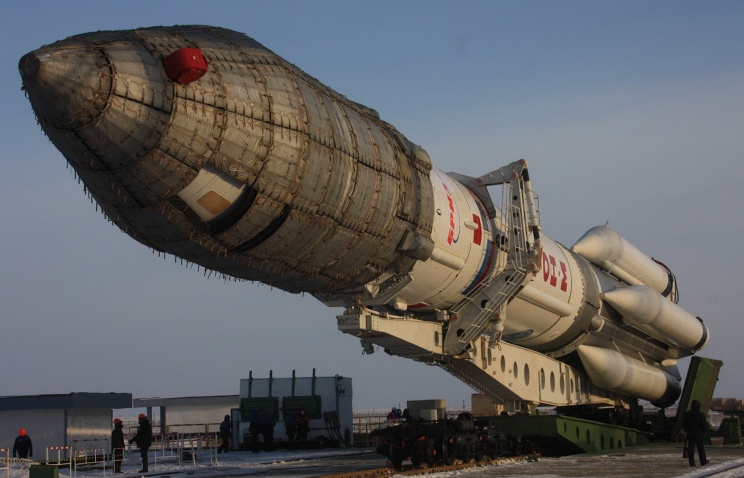Chronicle of the crash of the carrier rocket "Proton-M" with the satellite MexSat-1

On May 16, at 8:47 Moscow time, the Proton-M launch vehicle launched from the Baikonur cosmodrome . The rocket carried the Mexican communications satellite MexSat-1, which was supposed to provide communications in Mexico and Central South America. The initial launch of the rocket was scheduled for April 29, but was postponed at the request of the customer.
9 minutes after the start, one minute before the estimated time of separation of the Briz-M and MexSat-1 upper stages, an abnormal situation occurred. “There was a shutdown of third-stage engines for about 500 seconds of flight. At the same time, by that time telemetry information had not been received from a number of channels from the rocket for some time, ” a participant commented on the incident .
')
If the rocket does not burn completely, then the supposed place of the fall of its remnants is 30 km from the nearest settlement. Roscosmos has already informed about the incident of the Emergencies Ministry in the region, and the latter have already sent a Mi-8 helicopter to this place.
At 11 am, a source in Roscosmos reported that unconfirmed data had appeared on the fall of carrier rocket debris in the Krasnochikoye district of the Trans-Baikal Territory - this information has yet to be verified.
Shortly after 11 am, the head of Roscosmos, Igor Komarov, arrived at the space agency building. He meets with reports about the Proton launch vehicle crash and the emergency situation during an attempt to correct the orbit of the International Space Station. Problems with the ISS arose at the end of April, after malfunctions in the Progress M-27M spacecraft.
At 12 o'clock Roskosmos asked Rosgidromet for information about the weather in the intended area of the launch vehicle's fall. The agency wants to insure in case there will remain fuel in the rocket’s tanks, which does not burn and instead disperses in the atmosphere. To warn people and to prevent possible consequences, it is necessary to find out where these residues can be attributed to the wind, and whether they will fall out with precipitation.
At about 13 o'clock the fact of the fall of the remains received some confirmation. Residents of the small village of Harauz in the north-west of the district heard a rumble for ten minutes, then they saw that the forest was set on fire. “The forest is being extinguished, but nothing has been found there yet,” said the district administration. And in Ulan-Ude, residents heard a "loud bang."
But by two o'clock in the afternoon, the press service of the agency reported that the third stage, the upper stage and the spacecraft were almost completely burned in the atmosphere. At the same time, no drops of unburned elements were recorded.
In Roskosmos it was decided to create an emergency commission, the first meeting of which will be held on Sunday morning. According to preliminary data, the failure of steering engines of the third stage of the carrier became the cause of the accident of the Proton-M rocket. At this time, the rocket was at an altitude of about 160 km, so when it falls, its body and fuel residues must burn in the atmosphere.
This launch was the second consecutive failure among Russia's orbital space launches in 2015. During the previous launch, Progress M-27M , which was supposed to dock with the ISS, could not reach the calculated orbit and burned down in the atmosphere on May 8, 2015. The remaining seven launches since the beginning of this year have been successful.
In 2014, Russia became the world leader in space rocket launches. Of the 32 orbital launches, only one was unsuccessful, in which the Express-AM4R satellite was lost.
Source: https://habr.com/ru/post/365527/
All Articles